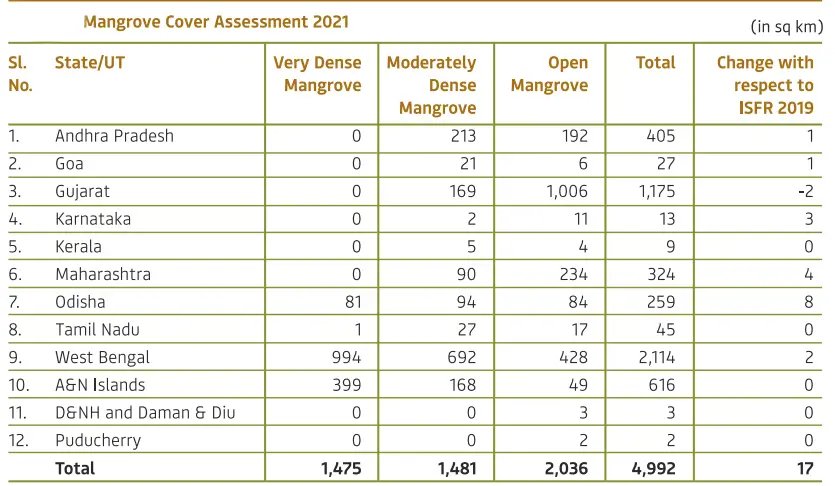International Day for the Conservation of the Mangrove Ecosystem 2023
The International Day for the Conservation of the Mangrove Ecosystem or Mangrove Day is celebrated each year on July 26th. Its main goal is to raise awareness worldwide about the importance of mangrove ecosystems, which are unique, valuable, and fragile environments. This special day also aims to promote sustainable practices in the management, protection, and use of these ecosystems.
What are Mangroves?
Mangroves are trees and shrubs that grow in the intertidal zone of tropical and subtropical coastal areas. They are tolerant of high salinity, tidal flooding, and low oxygen levels.
Mangroves are coastal habitats comprised of salt-tolerant trees and plants that grow in tropical and subtropical regions. They play a crucial role in the environment by acting as natural barriers against coastal erosion and storm surges, providing habitats for various marine species, and supporting the livelihoods of local communities. Their conservation is vital for maintaining ecological balance and biodiversity.
Status of Mangrove Cover Worldwide
- As per Global Forest Resource Assessment, 2020 (FRA 2020), the world over, 113 countries have Mangrove forests covering an estimated 14.79 million hectares.
- The largest Mangrove area is reported in:
- Asia > Africa > North and Central America > South America.
- Oceania has reported the smallest area of Mangroves.
- More than 40% of the total area of Mangroves was reported to be in just four countries: Indonesia (19%), Brazil (9%), Nigeria (7%), and Mexico (6%).
- The largest Mangrove area is reported in:
Status of Mangrove Cover in India
- The mangrove cover in India is 4,992 sq km, which is 0.15% of the country’s total geographical area.
- Increase in the mangrove cover as compared to the 2019 assessment: 17 sq km (0.34%)
- The states that show significant gain in Mangrove cover are Odisha and Maharashtra.

- Sunderban, located in the northern Bay of Bengal is the world’s largest single patch of Mangrove Forests. Spread over approximately 10,000 sq km, in Bangladesh and India.
- Sundarban is the first Mangrove forest in the world, which was brought under scientific management, as early as in 1892.
- Appreciating the importance of Mangroves, the Government of India set up a National Mangroves Committee in 1976 to advise the Government on issues related to the conservation and development of Mangroves in the country.
History of International Day for the Conservation of the Mangrove Ecosystem
The International Day for the Conservation of the Mangrove Ecosystem was adopted by the General Conference of the United Nations Educational, Scientific, and Cultural Organization (UNESCO) in 2015. It is celebrated every year on July 26th to raise awareness of the importance of mangrove ecosystems and to promote solutions for their sustainable management, conservation, and uses.
Significance of International Day for the Conservation of the Mangrove Ecosystem
The International Day for the Conservation of the Mangrove Ecosystem is celebrated on July 26th every year to raise awareness of the importance of mangrove ecosystems and to promote solutions for their sustainable management, conservation, and uses.
Mangroves are unique, special, and vulnerable ecosystems that are found in tropical and subtropical coastal areas. They are tolerant of high salinity, tidal flooding, and low oxygen levels. Mangroves provide a variety of important ecological services, including:
- Coastal protection: Mangroves act as a natural barrier against storm surges, tsunamis, and coastal erosion. They can reduce the impact of these natural disasters by absorbing the force of the waves and wind.
- Fish and wildlife habitat: Mangroves provide a nursery habitat for many fish and other marine animals. They also provide food and shelter for a variety of other wildlife, such as birds, reptiles, and mammals.
- Carbon storage: Mangrove soils are highly effective carbon sinks, sequestering vast amounts of carbon from the atmosphere. This helps to mitigate climate change.
- Food security: Mangroves provide a source of food for many coastal communities. The leaves, fruits, and bark of mangrove trees can be eaten, and the fish and other animals that live in mangrove forests are a valuable source of protein.
Unfortunately, mangrove ecosystems are under threat from a variety of human activities, including:
- Deforestation: Mangroves are often cleared for development, aquaculture, and other human activities. This deforestation can lead to coastal erosion, flooding, and loss of biodiversity.
- Pollution: Mangroves are polluted by agricultural runoff, industrial waste, and sewage. This pollution can kill mangrove trees and harm the wildlife that depends on them.
- Climate change: Climate change is causing sea levels to rise, which is inundating mangrove forests and making them more vulnerable to storms and other natural disasters.
The International Day for the Conservation of the Mangrove Ecosystem is an opportunity to raise awareness of the importance of these unique ecosystems and to take action to protect them. By working together, we can ensure that mangroves continue to provide the many benefits they offer to coastal communities and the planet as a whole.
- 3 August Current Affairs 2023 in English
- MoU Between Subroto Mukerjee Sports and Education Society and All India Football Federation (AIFF) to Promote Football at Grassroot Level
- Dr. Mansukh Mandaviya Delivers Keynote Address at the 13th Indian Organ Donation Day ceremony
- Education Ministry Forms Expert Panel on Anti-Discrimination in Higher Education
- Concerns Arise Over Cheetah Deaths at Kuno National Park

